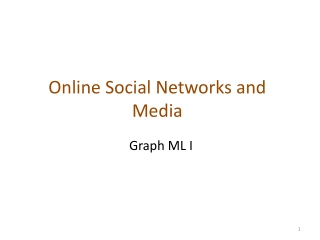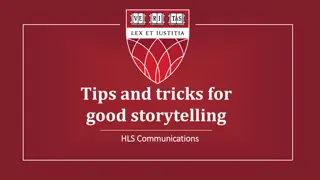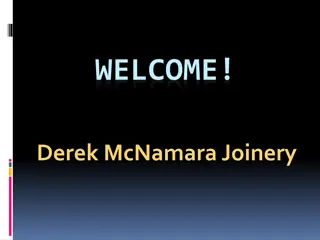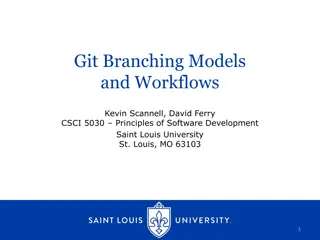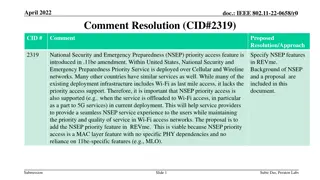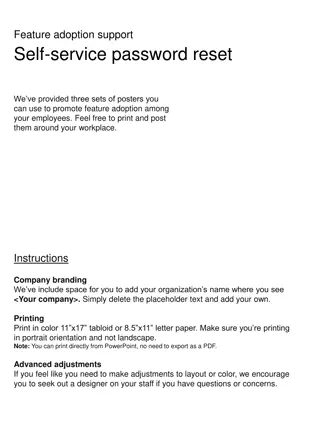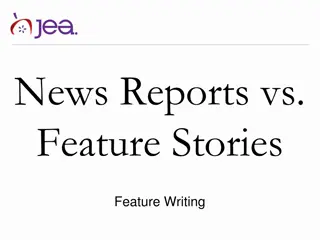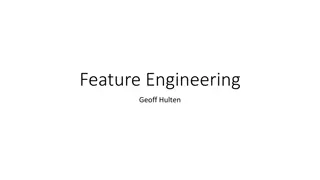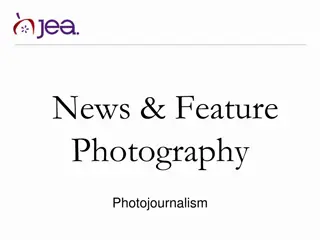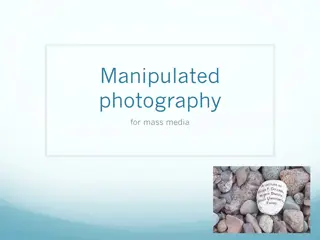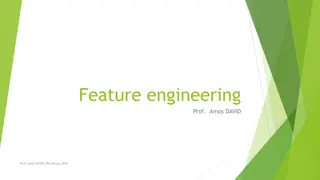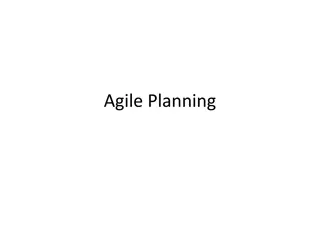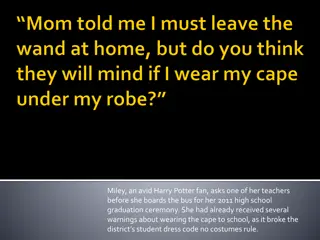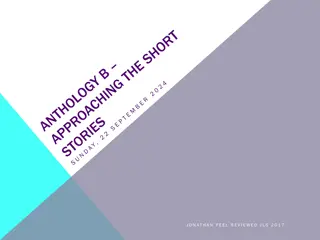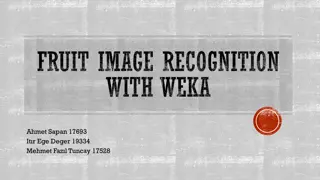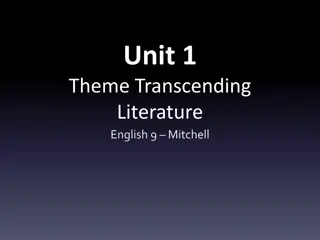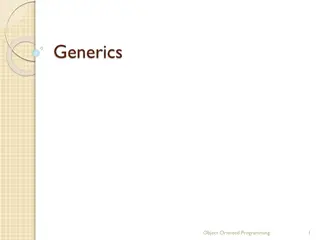Types of Feature Stories
Feature stories play a crucial role in journalism by broadening and emphasizing the news through various storytelling techniques. This article delves into different types of feature stories, including personality profiles, human interest stories, and behind-the-scenes narratives, providing insights on how each type can engage readers in unique ways. Learn how to craft compelling feature stories that resonate with audiences and enhance the overall storytelling experience.
Uploaded on Mar 09, 2025 | 0 Views
Download Presentation

Please find below an Image/Link to download the presentation.
The content on the website is provided AS IS for your information and personal use only. It may not be sold, licensed, or shared on other websites without obtaining consent from the author.If you encounter any issues during the download, it is possible that the publisher has removed the file from their server.
You are allowed to download the files provided on this website for personal or commercial use, subject to the condition that they are used lawfully. All files are the property of their respective owners.
The content on the website is provided AS IS for your information and personal use only. It may not be sold, licensed, or shared on other websites without obtaining consent from the author.
E N D
Presentation Transcript
Types of Feature Stories Feature Writing
Whats a Feature Story, again? Feature stories can help to broaden, emphasize, amplify the news. Features can tell those multiple stories in a variety of ways, and we will spend the next few class periods exploring the most common types of features.
Lets start class! Take out your homework chart: Source Title 2-3 Sentence Summary Feature Category Respond to the following question: What is something I learned about feature stories last class?
Add to your notes The next slides are all about each type of feature story. Take notes on key ideas onto your chart from yesterday, and fill in examples as we discuss them.
PERSONALITY PROFILE What: reveals an individual s character and lifestyle; exposes different facets of the subject so readers feel they know him/her. Why: readers love to learn about other people famous, remarkable, unusual. How: combines quotes, details, facts, descriptions to show more than tell. Note: It is important to relate the profile to something currently going on in the news, whether local, national or global to heighten reader interest. Readers will ask Why should I care? or Why does this matter to me? The news peg answers that question for them and makes the profile relevant.
HUMAN INTEREST STORY What: discusses issues through the experiences of another. Why: readers like good stories to make them laugh or cry. How: use storytelling skills set scene, establish mood, describe characters, conflict. Note: All features benefit from a human interest angle. Human interest stories discuss issues through the experiences of another.
BEHIND THE SCENES (LIVE-IN, COLOR) STORY What: inside views of events, issues, unusual occupation, unique location or subculture; reporter becomes part of the culture and writes from first-hand experience. Why: it gives readers the feeling of penetrating the inner circle or being a fly on the wall. They re privy to unusual details and well-kept secrets about procedures or activities they might not ordinarily be exposed to or allowed to participate in. How: captures mood and experience through observation, describing sights/sounds, interviewing participants. Personal narrative: while discouraged, sometimes the best way to share an unusual experience is in a personal narrative, recreating the drama. However, the experience must be dramatic.
ANALYSIS PIECE (SPOT NEWS OR BACKGROUNDER) What: focuses on an issue or event in news; covers same subjects as hard news but in greater depth and detail; focus on individuals more than hard news stories (which focus on numbers and statistics); usually hung on an individual s story peg. Why: explain how something happened, why it matters; gives readers all they need to know about a complex topic quickly and in easily accessible format. How: thorough research and interviews; may begin with person and tells human side of story. Spot feature: focus on breaking news event (on deadline); often used as sidebars Reaction piece: provides sampling of opinions.
TREND STORY What: covers what s fresh and new and current people, places, things, ideas (art, fashion, film, music, high-tech, fads, lifestyle). Why: keep readers up-to-date on what s affecting culture. How: bright, light, tight; quick and easy to read, capture spirit of whatever trend is being discussed. Seasonal themes: stories about holidays and change of seasons at specific times of the year.
FLASHBACK OR HISTORICAL FEATURES: What: commemorate historical anniversaries or turning points in social, political or cultural development. Juxtapose then vs. now. Why: take reader back to revisit event and issues surrounding it. Explain significance and why it still matters. How: Combine facts, photos, interviews to explain. Variation: this date in history (short, reminds of significant events on particular date).
HOW-TO (EXPLANATORY) What: explains how to do something or how something works; detailed description that makes it easy for the average person to understand the entire process; often uses similes, metaphors; a step-by-step explanation to help a reader accomplish a particular job or task. Why: teaches readers how to do something. How: writer learns about topic through education, experience, research or interviews with experts.
CONSUMER GUIDE What: tells readers where to find best food, clothing, tech, music anything they want to buy. Why: readers want to get the best quality at lowest cost and want research done for them. How: do research and rate items, list pros/cons, provide options, include when/where/how much info.
Which works best? What are the THREE best types of feature story for our publication? What is the worst type? Be prepared to share your answers and explain WHY you have chosen the answers you agreed upon in your group.
Identification Practice Read the sample feature story you ve been given. What type of feature story is it? Be prepared to share your answers and point out specific examples from the story to justify your opinion.
Exit Ticket: What are three specific things you learned about feature writing today?
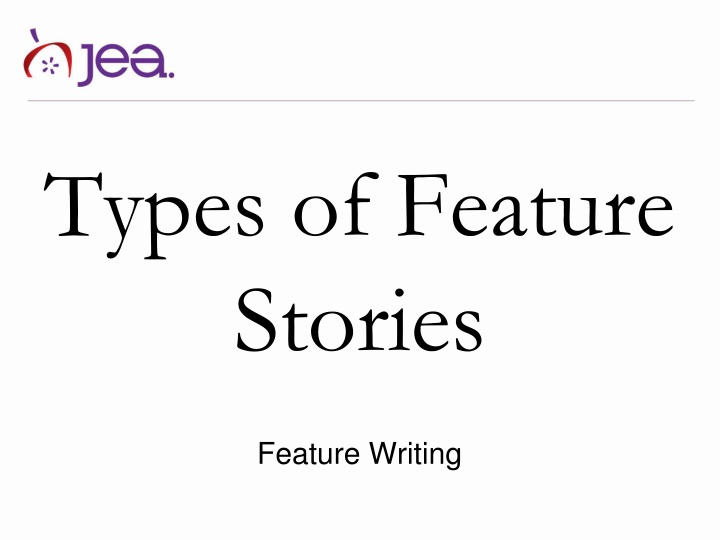

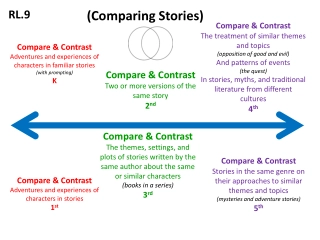
![Read⚡ebook✔[PDF] The Untold Stories of the Space Shuttle Program: Unfulfilled D](/thumb/21685/read-ebook-pdf-the-untold-stories-of-the-space-shuttle-program-unfulfilled-d.jpg)
